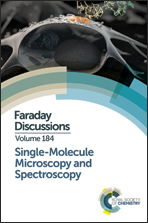Towards quantum networks of single spins: analysis of a quantum memory with an optical interface in diamond
Abstract
Single defect centers in diamond have emerged as a powerful platform for quantum optics experiments and quantum information processing tasks. Connecting spatially separated nodes via optical photons into a quantum network will enable distributed quantum computing and long-range quantum communication. Initial experiments on trapped atoms and ions as well as defects in diamond have demonstrated entanglement between two nodes over several meters. To realize multi-node networks, additional quantum bit systems that store quantum states while new entanglement links are established are highly desirable. Such memories allow for entanglement distillation, purification and quantum repeater protocols that extend the size, speed and distance of the network. However, to be effective, the memory must be robust against the entanglement generation protocol, which typically must be repeated many times. Here we evaluate the prospects of using carbon nuclear spins in diamond as quantum memories that are compatible with quantum networks based on single nitrogen vacancy (NV) defects in diamond. We present a theoretical framework to describe the dephasing of the nuclear spins under repeated generation of NV spin-photon entanglement and show that quantum states can be stored during hundreds of repetitions using typical experimental coupling parameters. This result demonstrates that nuclear spins with weak hyperfine couplings are promising quantum memories for quantum networks.
- This article is part of the themed collection: Single-Molecule Microscopy and Spectroscopy

 Please wait while we load your content...
Please wait while we load your content...